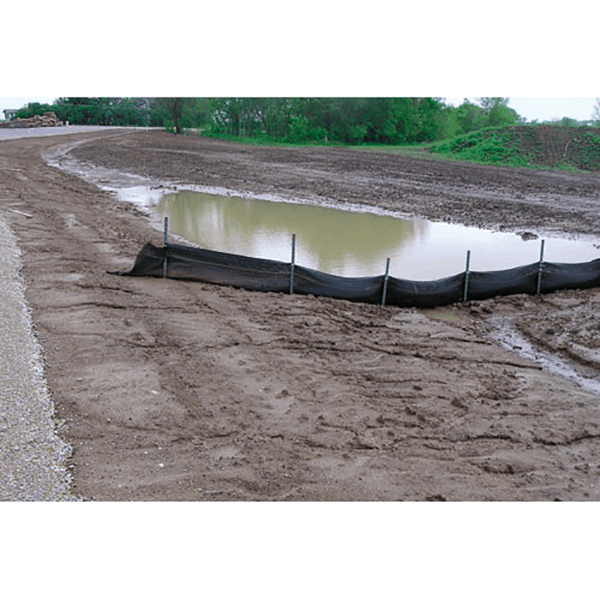Best Practices for Silt Fence Maintenance

Silt fences provide a barrier on construction sites to stop the movement of sediments when the land and soil is disturbed. These fences must remain in place until the activities disturbing the ground are complete. This means they require maintenance to keep them performing effectively. Ecospill provides quality materials to establish and easily maintain silt fences on your site. In this article, we explain the steps for regular silt fence maintenance and tips to ensure your fence remains operational for a long time.
HOW TO MAINTAIN YOUR SILT FENCE
Maintaining your silt fence allows it to remain effective for longer and ensures it doesn’t allow sediment to pass through. The fence should remain in place, with the posts sitting firmly in the ground and the material unstrained. Regular maintenance saves you money and time by ensuring the fence remains intact and undamaged so that a new one isn’t required. Maintain your silt fence by performing the following steps regularly:
1. Check for straining
When sediment builds against the fabric material, it can push into the material and cause it to become strained. When strained, this section can pull other parts of the material and dismantle the fence, or it can eventually cause a tear. First, walk the length of your fence, inspecting any tight areas where water or sediment has accumulated. Next, either remove the sediment or move it to the side to even out the accumulation.
2. Inspect the fence after rainfall
Rainfall can cause the fence to hold a high amount of sediment and water, so after it rains is an ideal time for silt fence maintenance. You should check for increased amounts of sediment and other materials that have accumulated after periods of rainfall and remove them if necessary.
3. Look for gaps and tears
Gaps and tears in the material can allow sediments and water to pass through and make the fence ineffective. When checking for strain on the fabric material, check for any openings and gaps of any size, as small ones can quickly turn into larger ones. If you find any, you can repair the section of the fence by cutting a new piece of fabric that is long enough to be attached to the posts on either side and securing it with staples.
4. Inspect posts for movement
Another component of silt fence maintenance is to inspect each post of the fence for movement or displacement. Depending on the soil they’re installed into, posts can loosen over time and may fall out of their holes. As the posts are responsible for the fence’s structural integrity and keeping it upright, a loose post can cause the fence to fall and allow sediment to pass through. If any posts are loose, compact the ground by adding additional soil around them or install them in a new spot where the ground is firm but still along the fence line.
5. Remove sediment
When too much sediment piles up on the silt fence, it can no longer drain slowly and function as it’s meant to. An inability to drain means sediment will continue to build up faster and may apply too much pressure for the fence to handle, causing it to fall. Therefore, we advise that you remove sediment when it’s over one-quarter of the height of the fabric for the fence to remain effective.
Summary
Silt fences are a powerful and straightforward resource to protect watercourses and nearby soils from construction activities that cause sediments to travel. You can maintain your fence with a regular inspection of its condition, repair any damages and remove built-up sediment to keep it in good condition for longer. Ecospill provides high-quality silt fence materials which last longer and make your silt fence maintenance simple.
